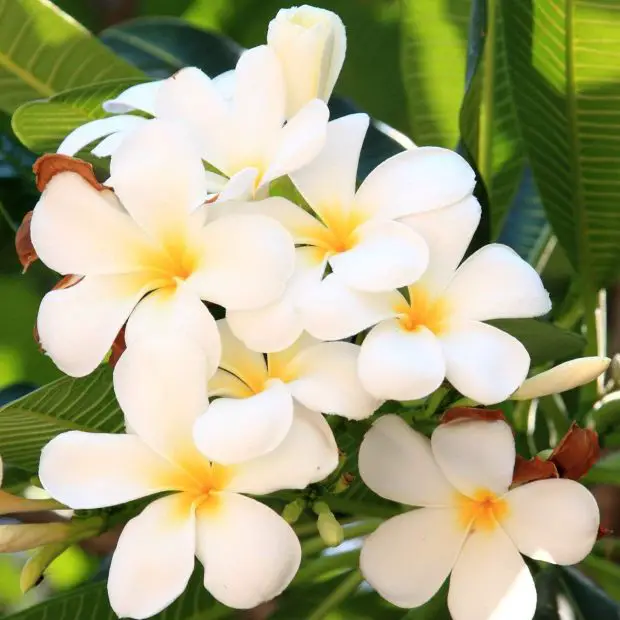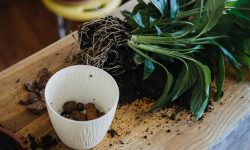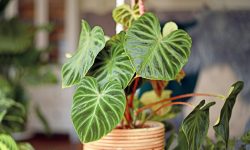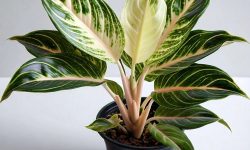Introduction
Plumeria, often referred to as frangipani, is a captivating tropical plant known for its intoxicating fragrance and vivid, velvety flowers. Native to the Caribbean, Mexico, and Central America, plumerias have become a favorite in American gardens, especially in warm climates like Florida, California, and Hawaii. With the right care, these stunning plants can flourish not just in tropical environments but also in temperate zones when grown in containers. Learning how to nurture plumeria is essential for those who want to enjoy its blooms and scent year after year.
Understanding Plumeria’s Growing Needs

Plumeria is a sun-loving plant that thrives in warm temperatures and needs a consistent amount of light to produce its iconic blooms. Without sufficient light, the plant may survive but will struggle to flower. Understanding its natural environment helps recreate the right conditions at home.
Plumeria also prefers well-drained soil. In its native habitat, it grows in sandy or rocky terrain that doesn’t retain water. When cultivated in containers or home gardens, soil that holds too much moisture can lead to root rot. Mimicking its original growing environment is the first step to keeping it healthy.
Choosing the Right Location for Plumeria
Location is everything when growing plumeria. If you’re growing it outdoors in a tropical or subtropical climate, placing it in a spot that receives at least six hours of sunlight daily will ensure a healthy growth cycle. For indoor growers or those in colder regions, placing the plant near a south-facing window or under a grow light during the colder months helps maintain its vigor.
During the growing season, which typically begins in spring and ends in fall, plumeria should be placed in the brightest area available. As a plant that loves warmth, it does not tolerate frost and must be protected or brought indoors when temperatures drop below 50°F.
Watering and Moisture Requirements
Although plumeria needs regular watering during its active growth period, overwatering is one of the most common mistakes new growers make. The key is to allow the soil to dry out slightly between waterings. This mimics the plant’s natural conditions and encourages strong root development.
In colder months or when the plant goes dormant, watering should be significantly reduced. When the plant sheds its leaves and enters dormancy, it requires only minimal moisture to prevent the roots from drying out entirely.
Fertilizing for Flower Production
Fertilizing plays a critical role in promoting flowering. Plumeria is a heavy feeder during the growing season. A fertilizer rich in phosphorus encourages the development of vibrant and abundant blooms. Many growers use a bloom booster or a balanced fertilizer with a higher middle number in the N-P-K ratio.
Feeding should begin in early spring as new growth emerges and continue every few weeks until late summer. By providing consistent nutrients during the growth phase, you help the plant build enough energy reserves to produce the flowers it’s celebrated for.
Pruning and Shaping Plumeria Plants
Plumeria naturally grows in a branching pattern that can become unruly without occasional pruning. Pruning is best done in late winter or early spring before the plant begins actively growing. Cutting back leggy or damaged branches not only improves the plant’s shape but also stimulates new growth.
When pruning, use clean, sharp tools to make angled cuts above leaf nodes. This encourages branching and leads to a fuller, more attractive plant. Although pruning may delay blooming slightly, the result is a healthier and more aesthetically pleasing specimen.
Growing Plumeria in Containers
Many gardeners outside tropical regions prefer to grow plumeria in containers. This approach offers flexibility in moving the plant indoors during cold spells and managing soil conditions more precisely. A container should have excellent drainage and be large enough to accommodate the plant’s extensive root system.
Using a mix specifically formulated for cactus or succulents, or creating your own with sand, perlite, and potting soil, will offer the drainage plumeria needs. Container-grown plants may require more frequent watering and feeding, but they also allow better control over the plant’s health.
Overwintering and Dormancy
Plumeria enters a natural period of dormancy in the winter, especially in cooler regions. During this time, the plant may lose all its leaves and appear dead, but this is a normal phase in its cycle. Moving the plant to a dry, protected location with temperatures above freezing ensures its survival until spring.
While dormant, plumeria should be watered sparingly. A small amount of moisture once every three to four weeks is usually sufficient. Once temperatures begin to rise and days lengthen, the plant will begin to awaken and put out new leaves, signaling the start of a new growth cycle.
Pest and Disease Management
Plumeria is relatively pest-resistant, but it can occasionally fall victim to insects such as spider mites, aphids, or whiteflies. Regular inspection of leaves and stems allows early detection. A gentle spray with insecticidal soap or neem oil can manage most infestations effectively without harming the plant.
Root rot is a more serious concern and usually results from overwatering. Ensuring proper drainage and avoiding soggy conditions is the best prevention. Yellowing leaves, blackened stems, and a foul smell from the soil may indicate root rot, and affected parts should be removed promptly.
Encouraging Blooming Year After Year
The secret to consistent blooming lies in a combination of sunlight, feeding, pruning, and patience. Some varieties of plumeria take several years to mature enough to bloom. Once established, however, these plants can produce clusters of fragrant flowers multiple times throughout the growing season.
If a mature plumeria fails to bloom, evaluate its light exposure, feeding schedule, and pruning history. Improving just one of these factors can often stimulate flowering. With proper care, the reward is a showy, fragrant display that feels like summer no matter where you live.
Frequently Asked Questions
How often should I water my Plumeria?
Plumeria prefers well-draining soil and should be watered thoroughly when the top inch of soil feels dry. During the active growing season, watering once or twice a week is typically sufficient. In winter, reduce watering significantly as the plant enters dormancy.
Can Plumeria be grown indoors?
Yes, Plumeria can be grown indoors if provided with plenty of bright, direct sunlight—preferably near a south-facing window. If natural light is limited, supplementing with a grow light will help maintain healthy growth and blooming indoors.
Why isn’t my Plumeria blooming?
Lack of blooming in Plumeria is often caused by insufficient sunlight, overwatering, or poor fertilization. Ensure your plant gets at least 6 hours of direct sunlight daily and apply a phosphorus-rich fertilizer during the growing season. Allow the plant to experience a natural dormancy period in winter for stronger flowering later.
What type of fertilizer should I use for Plumeria?
Use a fertilizer high in phosphorus (the middle number in N-P-K) to promote blooming. A balanced bloom booster such as 10-30-10 or 5-30-5 applied every 2 to 4 weeks during the growing season can encourage vibrant flowers.
Is it normal for Plumeria to lose leaves?
Yes, leaf drop is normal in Plumeria, especially in cooler months when the plant enters dormancy. Leaves yellow and fall off naturally during this time. As long as the branches remain firm and healthy, there’s no need for concern.
Can Plumeria survive winter outdoors?
Plumeria is a tropical plant and cannot tolerate frost. In USDA zones below 10, it should be brought indoors or kept in a greenhouse during winter. If left outdoors in cold climates, it will likely suffer cold damage or die.
Conclusion
Plumeria may seem like a tropical luxury, but with thoughtful care, it can thrive in a variety of American climates. From the bright sun and balanced nutrients to seasonal pruning and protection from cold, each aspect of its care contributes to a thriving, blooming plant. Whether you’re nurturing it in a sun-drenched garden or a container by the window, plumeria brings a burst of paradise into your daily life. With its unforgettable scent and stunning blossoms, this tropical beauty is more than worth the effort.






